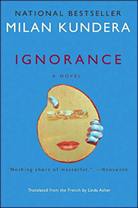
My friend Barbara from Philippines whom I have met back in Mauritius one day went online and as we chatted, I realized that she was like me taking a break from career and unlike me, she is a whole lot more productive – she is into charity works. Barbara introduced me to means to find out what our strengths are and we have made a pack – we are going to find our dream job at the same time. Some sort of support group we have.
In “Strengths Finder 2.0”, the author Tom Rath preaches that we should put our effort to develop our talents (hence making them our strengths) rather than to work on our weaknesses. That I am not too sure if I am entirely agreeable to it. According to the author, we all have our natural talents that are inborn. Hard work can only bring us to a level of mediocrity if you are not born with that talent. Personally, I would rather think that working hard on our passion does mean something and without paying attention to some of our weaknesses (like empathy for some), we can only go that far.
Anyway, here are my results. I am still very puzzled on what to make out of it. As in what sort of insights I should derive. I think friends of mine may have some idea on what my strengths are and looking at the listed ones below, are these my strengths? If so, what can I make out of it? It is so generic in a sense. So readers of my site, please lend me your two cents of thought.
In the order of my strengths are …
- Strategic – People who are especially talented in the Strategic theme create alternative ways to proceed. Faced with any given scenario, they can quickly spot the relevant patterns and issues.
- Learner – People who are especially talented in the Learner theme have a great desire to learn and want to continuously improve. In particular, the process of learning, rather than the outcome, excites them.
- Activator – People who are especially talented in the Activator theme can make things happen by turning thoughts into action. They are often impatient.
- Individualization – People who are especially talented in the Individualization theme are intrigued with the unique qualities of each person. They have a gift for figuring out how people who are different can work together productively.
- Futuristic – People who are especially talented in the Futuristic theme are inspired by the future and what could be. They inspire others with their visions of the future.
On a side note, I think the book is a precipitation of a great business idea. The real gem behind that book is that online survey that people would love to take. But in order to take the survey, you have to buy the book. Each book grants one entry to the survey and therefore, you cannot possibly share that book with others. To be frank, part one of the book tries to convince you why focusing on your strengths is important and out of 34 themes that are listed out in part two, only 5 that are relevant to you (hence only 15% is relevant to you). In another words, you put your money to the online survey rather than to the book.
The online survey consists of 177 questions each comes with 2 descriptors. Your job is to decide which of these 2 descriptors best suits you in a scale of 5 (visualize a lever that slides between the 2 descriptors at each end). Mind you, you have 20 seconds in exact to complete each question and the website will automatically proceed to the next question if you take too long to think. No toilet break or whatsoever.
An afterthought of mine is … it is good to reconfirm what my strengths are. The big question is: what’s next? The final report – pretty much like a condensed version of the book – further describes what each strength theme is and to probably help you come to terms with who you are. Each theme is also accompanied with 10 action items so all of a suddenly, there are 50 action items to work on. Some who took the test (as read from forums) wonder why the report only shows top 5 strengths rather than perhaps all 34 themes in descending order. I actually have no problem with that because I think there are only that many actions I can focus on at one time. And since the author preaches that focusing on weaknesses is a waste of resources, knowing what my bottom 29 themes is just a satisfaction to my curiosity.
Having said all of the above, I still wonder if these strengths are really inside of me all these while or because I have been a management consultant for over 10 years, I am conditioned to be good at these 5 areas. And if indeed all these years I have been working on my strengths, I shall be happy and growing and successful by now, which is not quite the case. The only conclusion I have is that there must be some fundamental flaws that blindsided me – something that the book fails to answer. Or perhaps …
… all these years I have been given opportunities to sharpen these strengths of mine but I have not fully exploited them because I did not manage to list down my strengths all these years and come to terms with myself until now?
It is funny how everything seems to make sense if tackle from random directions – however senseless the reality is. I still have my doubts.












